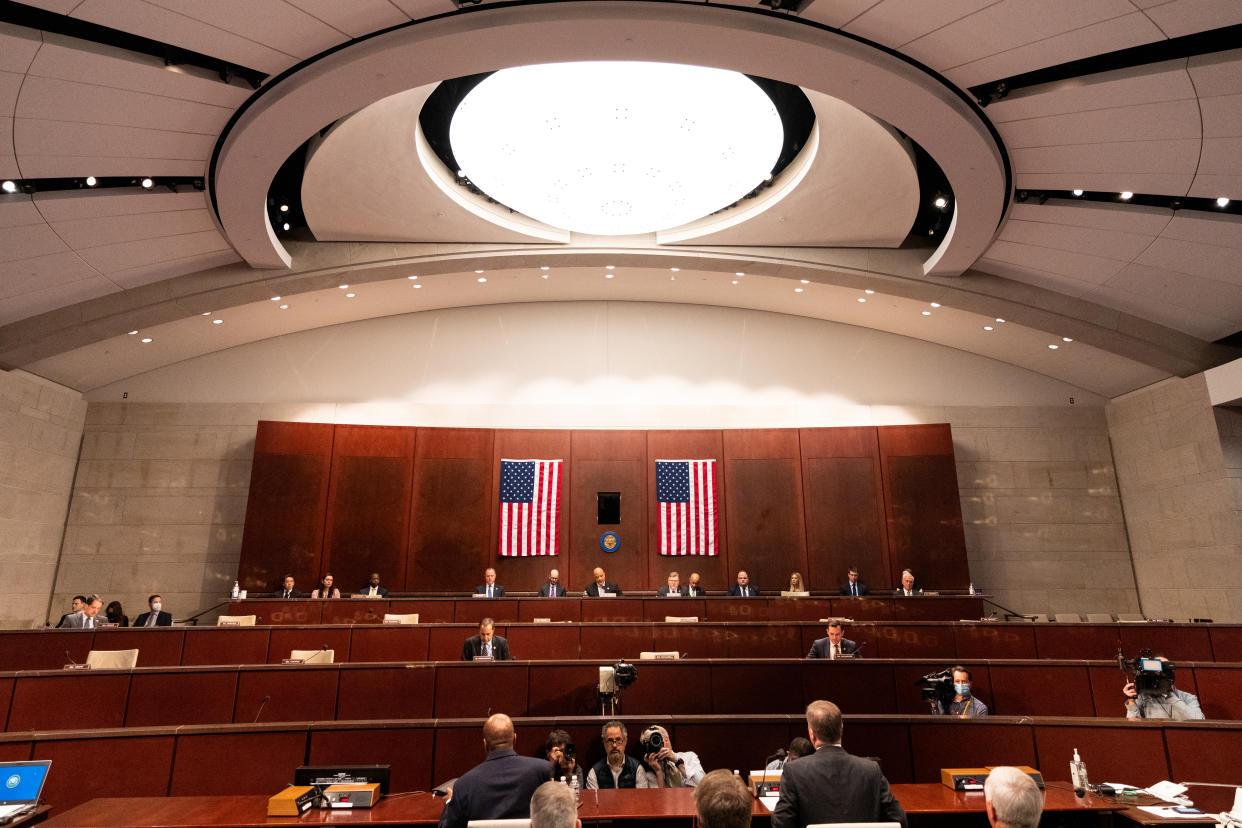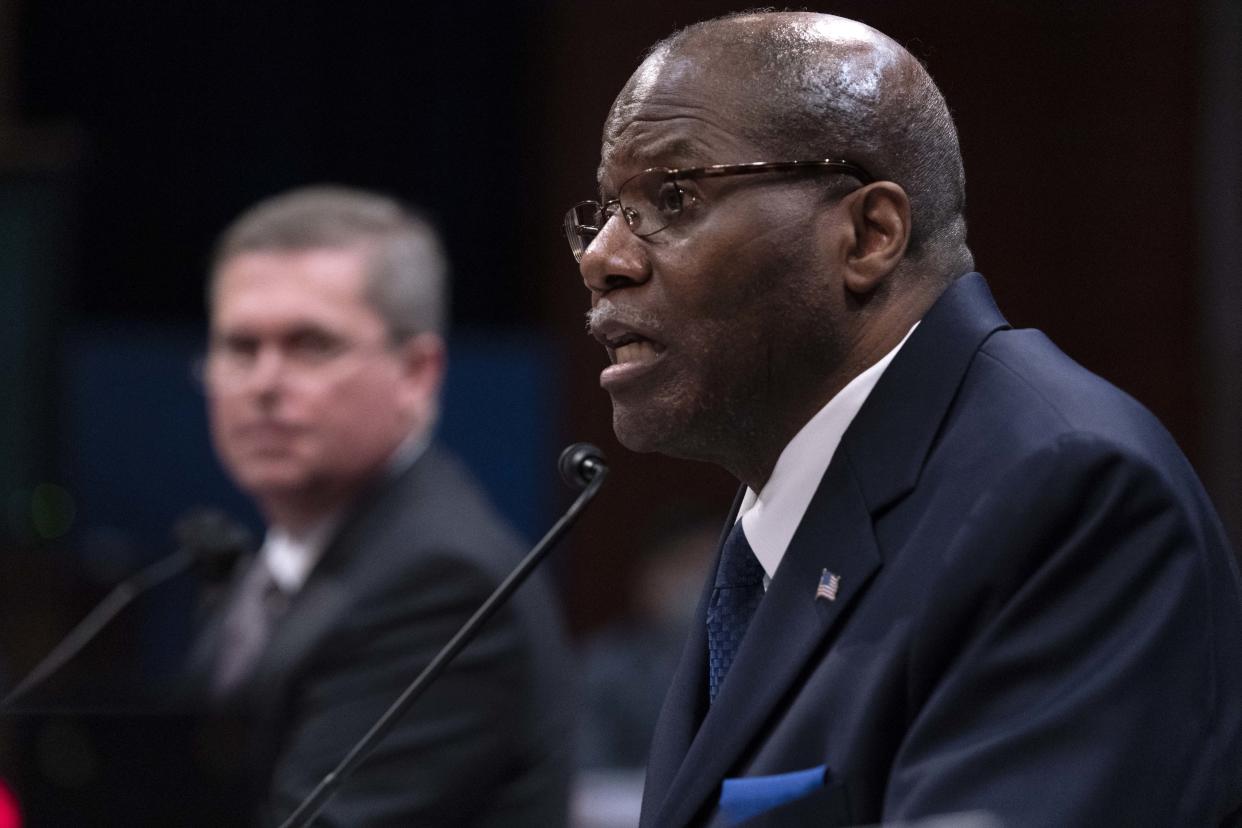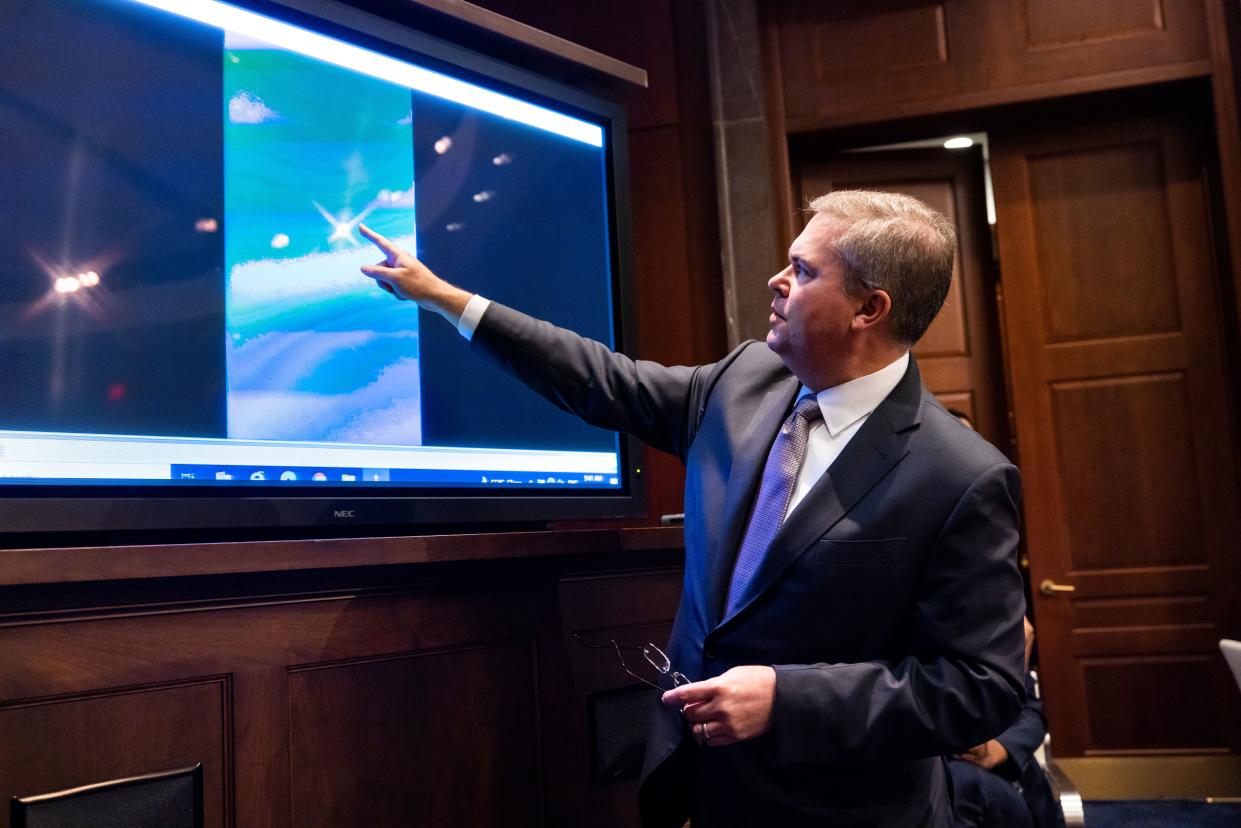Military takes UFOs seriously at congressional hearing: 'We want to know what's out there'
While the first congressional hearing on UFOs in more than 50 years didn’t reveal the existence of extraterrestrial life, it did affirm that the U.S. military is taking sightings of unknown craft seriously as a national security threat.
A House Intelligence Counterterrorism, Counterintelligence, and Counterproliferation Subcommittee hearing convened Tuesday morning with a 90-minute public session that was followed by closed-door testimony later in the day.
“Unidentified aerial phenomena [UAPs] are a potential national security threat, and they need to be treated that way,” Rep. André Carson, D-Ind., said at the beginning of the hearing, referring to the preferred technical term for unidentified flying objects, or UFOs.
“For too long, the stigma associated with UAPs has gotten in the way of good intelligence analysis,” he added. “Pilots avoided reporting or were laughed at when they did. DOD officials relegated the issues to the backroom or swept it under the rug entirely, fearful of a skeptical national security community.
“Today we know better,” Carson continued. “UAPs are unexplained, it’s true, but they are real. They need to be investigated, and any threats they pose need to be mitigated.”

The hearing — the first on the topic since 1966, when congressman and future president Gerald Ford held one after a sighting in Michigan — was less focused on concerns about alien invasion and more on intelligence lapses that could lead to other nations having unknown technology about which the U.S. is not aware. That push included making sure pilots feel comfortable reporting anything they see.
“The intelligence community has a serious duty to our taxpayers to prevent potential adversaries such as China and Russia from surprising us with unforeseen new technologies,” said Rep. Rick Crawford, R-Ark. “This committee has an obligation to understand what you are doing to determine whether any UAPs are new technologies or not — and if they are, where are they coming from?”
In November, the Pentagon announced the new Airborne Object Identification and Management Synchronization Group program to help with tracking. It followed a June 2021 report documenting 144 observations dating back to 2004.
“We know that our service members have encountered unidentified aerial phenomena, and because UAP pose potential flight safety and general security risks, we are committed to a focused effort to determine their origins,” Ronald Moultrie, undersecretary of defense for intelligence and security, testified at the hearing. “We want to know what’s out there as much as you want to know what’s out there. We get the questions not just from you. We get it from family, and we get them night and day.”

Scott Bray, deputy director of naval intelligence, said the Pentagon's database of unidentified objects has grown to “approximately 400 reports.” He said that while there had not been any collisions between military craft and UAPs, there had been at least 11 near misses. Bray said the military had not picked up communication signals from the objects, nor had it tried to begin communications with them.
“Generally speaking, it appears to be something that’s unmanned, appears to be something that may or may not be in controlled flight, so we have not attempted any communication with that,” he said, noting that the military had not fired on any UAP, nor had it come across any wreckage “that isn’t consistent of being with terrestrial origin.”
While Bray said that most of the sightings that were still unexplained could be attributed to a lack of data, he conceded, “There are a small handful of cases in which we have more data that our analysis simply hasn’t been able to fully pull together a picture of what happened.”
The American fascination with and military interest in UFOs are both decades old. In his opening remarks, Carson referenced the Air Force’s Project Blue Book, a classified program set up in 1952 that counted more than 12,000 UFO sightings over its 17-year existence, with hundreds still unexplained. A 2006 report of a disk hovering over O’Hare International Airport in Chicago was dismissed by the Federal Aviation Administration as a weather anomaly. The 1947 crash of a high-altitude balloon in Roswell, N.M., inspired generations of conspiracy theories about flying saucers. The unmanned craft was part of a top-secret program to monitor Soviet weapon tests.

In a March 1966 letter to two fellow congressmen, Ford wrote, “In the firm belief that the American public deserve a better explanation than that thus far given by the Air Force, I strongly recommend that there be a committee investigation of the UFO phenomena. I think we owe it to the people to establish credibility regarding UFO’s and to produce the greatest possible enlightenment on this subject.” The following month, Ford issued a statement saying that while some had “ridiculed” his call for a congressional investigation, they were a fraction of those who had given approval to look into a March event in which 40 people, including 12 police officers, claimed to have seen a cluster of UFOs.
In 2017, the New York Times published a story about how former Senate Majority Leader Harry Reid, D-Nev., had pushed for funding for the Advanced Aerospace Threat Identification Program, which investigated unexplained aerial sightings. The program ran from 2007 to 2012.
“I’m not embarrassed or ashamed or sorry I got this thing going,” said Reid. “I think it’s one of the good things I did in my congressional service. I’ve done something that no one has done before.”
